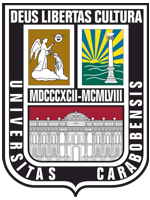The impact of mobile app-based learning and ai on understanding discrete random variables
DOI:
https://doi.org/10.46502/issn.1856-7576/2024.18.04.15Keywords:
Discrete Random Variables, Probability Distribution, MetaIA, probability, Bernoulli distribution, Binomial distribution, hypergeometric distribution, Poisson distribution, Artificial Intelligence.Abstract
This study analyzes the teaching of discrete random variables using the mobile app “PROBABILITY DISTRIBUTIONS” and responses generated by MetaIA Artificial Intelligence. 95 students from CETIS 167, who are in the sixth semester of probability and statistics, participated. It began with the explanation of the Bernoulli distribution to understand dichotomous events. Later, the students used the app to calculate probabilities with this distribution and explore concepts related to replacement and without replacement, connected to the hypergeometric and Bernoulli distributions, respectively. In addition, the Poisson distribution was addressed as a stochastic process, using the app to model probability mass functions. In the final stage, the students solved a four-item evaluation, using both the app and MetaIA. The results indicated that the students achieved a better interpretation of the problems by focusing on conceptual analysis rather than manual calculations. MetaIA showed strengths in classifying and breaking down exercises according to distributions, although it presented errors in mathematical calculations due to the lack of precision in the integration of sources. It is concluded that the combination of Learning and Knowledge Technologies with Artificial Intelligence can facilitate the resolution of real problems and promote a deeper understanding in students.
References
Agresti, A. (2018). An Introduction to Categorical Data Analysis. Wiley.
Agresti, A. (2021). Statistical Methods for the Social Science. Pearson Education.
Aho, M. (2024). On the quality of mathematical writing produced by ChatGPT and Gemini (Tesis Masters programme in engineering Physics an Matehamtics) Aalto University. Repositorio Institutcional de la Aalto University. https://aaltodoc.aalto.fi/server/api/core/bitstreams/663f70f0-4206-49b0-bdf3-1893109b4a65/content
Álvarez Álvarez, E., & Jiménez Ruiz, L. K. (2022). Aprendizaje móvil mediado por apps: Impacto para la innovación en ambientes educativos en América Latina. Revista de Investigación en Ciencias de la Educación, Horizontes, 6(26), 1-14. https://doi.org/10.33996/revistahorizontes.v6i26.490
Atlman, D. G. (1990). Practical Statistics for Medical Research. Chapman & Hall/CRC.
Babbie E. R. (2021). The Practice of Social Research. Cengage Learning.
Batanero, C., Diaz, C., Contreras, J. M., & Roa, R. (2013). El sentido estadístico y su desarrollo. Números: Revista de Didáctica de las Matemáticas, (83), 7-18. https://drive.google.com/file/d/1wBh0ttAwK02g3AS66terPWi48hxlEKqL/view
Bolaño-García, M., & Duarte-Acosta, N. (2024). Una revisión sistemática del uso de la inteligencia artificial en la educación. Revista Colombiana de Cirugía, 39(1), 51-63. https://doi.org/10.30944/20117582.2365
Casella, G., & Berger, R.L. (2002). Statistical Inference (2nd Edition). Thomson Learning Inc.
Cenich, G., Araujo, S., & Santos, G. (2020). Conocimiento tecnológico pedagógico del contenido en la enseñanza de matemática en el ciclo superior de la escuela secundaria. Perfiles educativos, 42(167), 53-67. https://doi.org/10.22201/iisue.24486167e.2019.167.59276
DeGrooot, M. H., & Schervish, M. J. (2002). Probability and Statistics. Addison-Wesley.
Devore, J. L. (2016). Probability and Statistics for Engineering and the Sciences. Cengage Learning.
Dillan, A. (2011). Celulares ¿Aliados o enemigos? Revista Clarin-educación, 18(2), 1-4. https://pdfcoffee.com/celulares-aliados-o-enemigos-clarin-2-pdf-free.html
Durrett, R. (2019). Probability Theory and Examples. Cambridge University Press.
Field, A. (2013). Discovering Statistics Using IBM SPSS Statistics: And Sex and Drugs and Rock “N” Roll (4th Edition). Sage.
Gal, I. (2007). Adults' Statistical Literacy: Meanings, Components, Responsibilities. International Statistical Review, 70(1). 1-25. https://doi.org/10.1111/j.1751-5823.2002.tb00336.x
Gavira Durón, N. (2023). Cómo potenciar las habilidades matemáticas con ChatGPT. Revista Mexicana De Bachillerato a Distancia, 15(30), 1-5. https://doi.org/10.22201/cuaieed.20074751e.2023.30.86525
Gómez Blancarte, A. L., Chávez Aguilar, R. D., & Miranda Viramontes, I. (2022). Enfoques de la enseñanza de la estadística en los programas de estudio de educación media superior. IE Revista De Investigación Educativa De La REDIECH, 13, 1-24. https://doi.org/10.33010/ie_rie_rediech.v13i0.1394
Grimmett, G., & Stirzaker, D. (2020). Probability and Random Processes. Oxford University Press.
Guadarrama Bustos, L., & Aguilar Lopez, M. A. (2021). Introduccion al Analisis Estadistico. Centro de Investigacion en Matematicas.
Gujarati, D.N., & Porter, D.C. (2009). Basic Econometrics (5th Edition). McGraw Hill.
Horton, N. J., & Hardin, J. S. (2015). Teaching the Next Generation of Statistics Students to “Think With Data”: Special Issue on Statistics and the Undergraduate Curriculum. The American Statistician, 69(4), 259–265. https://doi.org/10.1080/00031305.2015.1094283
Inzunza Cazares, S., & Islas Anguiano, E. (2019). Análisis de una trayectoria de aprendizaje para desarrollar razonamiento sobre muestras, variabilidad y distribuciones muestrales. Educación matemática, 31(3), 203-230. https://doi.org/10.24844/EM3103.08
Kleinbaum, D. G. & Klein, M. (2012). Survival Analysis. A self-Learning Text. Statistics for Biology and Health. Springer. http://www.uop.edu.pk/ocontents/survival-analysis-self-learning-book.pdf
Korkmaz Guler, N., Dertli, Z. G., Boran, E., & Yildiz, B. (2024). An artificial intelligence application in mathematics education: Evaluating ChatGPT’s academic achievement in a mathematics exam. Pedagogical Research, 9(2), 1-12. https://doi.org/10.29333/pr/14145
Lopezosa, C., Pérez-Montoro, M., & Rey Martín, C. (2024). El uso de la inteligencia artificial en las redacciones: propuestas y limitaciones. Revista De Comunicación, 23(1), 279–293. https://doi.org/10.26441/RC23.1-2024-3309
Mabel-Tauber, L., Alvarado Martínez, H., Zapata-Cardona, L., Pinto Sosa, J. E., & Albert Huerta, A. (2019). Experiencias de enseñanza sobre probabildiad y estadistica. Propuestas paa la enseñanza de mateamticas. Acta Latinoamericana de Matematica Educativa, 32(1), 316-326. https://funes.uniandes.edu.co/wp-content/uploads/tainacan-items/32454/1153463/Mabel2019Experiencias.pdf
Martinez-Baquero, J. E., & Rodríguez-Umaña, L. A. (2022). Uso de aplicaciones móviles como herramienta de apoyo tecnológico para la enseñanza con metodología steam. Revista Politécnica, 18(36), 75–90. https://doi.org/10.33571/rpolitec.v18n36a6
Montgomery, D. C., & Runger, G. C. (2018). Applied Statistics and Probability for Engineers. John Wiley & Son.
Moore, D. S., McCabe, G. P., y Alwan, L. (2017). Introduction to the Practice of Statistics (9th Edition). W.H. Freeman and Company.
Pagano, M., & Gauvreau, K. (2018). Principles of Biostatistics (2nd ed.). Chapman and Hall/CRC. https://doi.org/10.1201/9780429489624
Rice, J. A. (2006). Mathematical Statistics and Data Analysis. Thomson/Brooks/Cole.
Romero Villafranca, R., & Zunica Ramajo, L. (2013). Metodos estadisticos para ingenieros. Editorial Universitat Politècnica de València.
Rosner, B. (2006). Fundamentals of Biostatistics. Cengage Learning.
Ross, S. M. (2019). Introduction to Probability Models. Academic Press.
Sarrazola, A. (2023). Uso de ChatGPT como herramienta en las aulas de clase. Revista EIA, 20(40), 1–23. https://doi.org/10.24050/reia.v20i40.1708
Sulym, V., Melnykov, A., Popov, M., Vechirko, O., & Malets, D. (2023). Improving education through implementation of information technologies into the educational process. Amazonia Investiga, 12(68), 281–293. https://doi.org/10.34069/AI/2023.68.08.26
Wardat, Y., Tashtoush, M. A., AlAli, R., & Jarrah, A. M. (2023). ChatGPT: A revolutionary tool for teaching and learning mathematics. Eurasia Journal of Mathematics, Science and Technology Education, 19(7), 1-18. https://doi.org/10.29333/ejmste/13272
Wasserman, L. (2004) All of Statistics. A Concise Course in Statistical Inference. Springer.
Wooldridge, J. M. (2020). Introductory Econometrics: A Modern Approach. Cengage Learning.
Zapata Cardona, L. (2011). ¿Cómo contribuir a la alfabetización estadística? Revista Virtual Universidad Católica Del Norte, 1(33), 234–247. https://revistavirtual.ucn.edu.co/index.php/RevistaUCN/article/view/4
Published
How to Cite
Issue
Section
License
Copyright (c) 2025 Pavel David Ulises Avendaño-López, González Torres Arturo, Cynthia Figueroa-Anzures

This work is licensed under a Creative Commons Attribution 4.0 International License.














